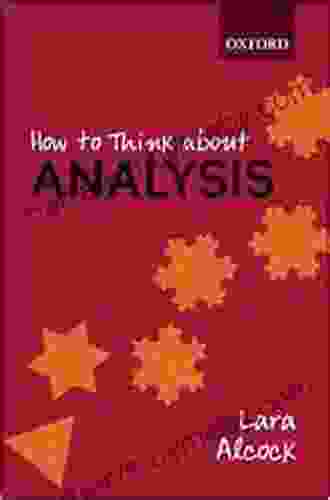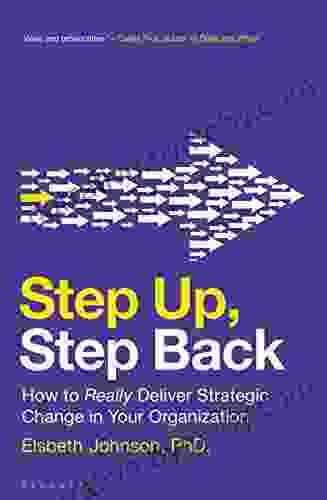How to Think About Analysis: A Comprehensive Guide to Critical Thinking

In today's world, we are constantly bombarded with information. From news articles to social media posts to advertising, we are constantly being asked to make decisions about what to believe and how to act. But how can we be sure that we are making the best decisions possible? The answer is critical thinking.
4.6 out of 5
| Language | : | English |
| File size | : | 7704 KB |
| Text-to-Speech | : | Enabled |
| Screen Reader | : | Supported |
| Enhanced typesetting | : | Enabled |
| Print length | : | 274 pages |
| Lending | : | Enabled |
Critical thinking is the ability to analyze information and arguments and to form our own s. It is a skill that is essential for success in all areas of life, from personal relationships to professional endeavors. But critical thinking is not always easy. It requires practice and effort.
This guide will provide you with the tools you need to develop your critical thinking skills. We will cover the basics of analysis, including how to identify the different types of arguments and how to evaluate evidence. We will also discuss some of the common pitfalls of critical thinking and how to avoid them.
The Basics of Analysis
Analysis is the process of breaking down information into its component parts and examining them in detail. When we analyze something, we are trying to understand how it works, what it means, and what its implications are.
There are many different types of analysis, including:
- Data analysis: This type of analysis involves collecting and examining data in Free Download to identify patterns and trends.
- Argument analysis: This type of analysis involves examining the structure and content of an argument in Free Download to evaluate its validity and soundness.
- Situation analysis: This type of analysis involves examining a situation in Free Download to identify the key factors that are influencing it.
No matter what type of analysis you are conducting, there are some basic steps that you should follow:
- Identify the purpose of your analysis. What do you want to learn from this analysis? What questions are you trying to answer?
- Gather information. This may involve collecting data, reading articles, or interviewing people.
- Organize your information. This will help you to see the relationships between the different pieces of information and to identify the key points.
- Analyze your information. This is where you will apply your critical thinking skills to evaluate the evidence and to form your own s.
- Communicate your findings. This may involve writing a report, giving a presentation, or having a discussion with others.
Identifying the Different Types of Arguments
One of the most important skills in critical thinking is the ability to identify the different types of arguments. This will help you to evaluate the validity and soundness of an argument and to make more informed decisions.
There are many different types of arguments, but some of the most common include:
- Deductive arguments: These arguments are based on the principle of deduction, which states that if the premises are true, then the must also be true.
- Inductive arguments: These arguments are based on the principle of induction, which states that if most of the premises are true, then the is likely to be true.
- Analogical arguments: These arguments are based on the principle of analogy, which states that if two things are similar in one way, then they are likely to be similar in other ways.
Each type of argument has its own strengths and weaknesses. Deductive arguments are the most valid type of argument, but they can only be used when the premises are true. Inductive arguments are less valid than deductive arguments, but they can be used to make more general s. Analogical arguments are the least valid type of argument, but they can be useful for making predictions and for generating new ideas.
Evaluating Evidence
Another important skill in critical thinking is the ability to evaluate evidence. This will help you to determine whether or not a claim is supported by sufficient evidence.
There are many different factors to consider when evaluating evidence, including:
- The source of the evidence: Is the source credible? Is the source biased?
- The type of evidence: Is the evidence anecdotal or scientific? Is the evidence direct or indirect?
- The quantity of evidence: Is there enough evidence to support the claim?
- The quality of the evidence: Is the evidence accurate? Is the evidence relevant?
By carefully evaluating the evidence, you can make more informed decisions about whether or not to believe a claim.
Common Pitfalls of Critical Thinking
Critical thinking is a complex skill, and it is easy to make mistakes. Some of the most common pitfalls of critical thinking include:
- Confirmation bias: This is the tendency to seek out information that confirms our existing beliefs.
- Hindsight bias: This is the tendency to believe that we could have predicted an event after it has already happened.
- Overconfidence: This is the tendency to believe that we know more than we actually do.
- Groupthink: This is the tendency to conform to the opinions of the group, even when we disagree with them.
By being aware of these common pitfalls, we can take steps to avoid them and to improve our critical thinking skills.
Critical thinking is a valuable skill that can help us to make better decisions, to solve problems, and to understand the world around us. By following the steps outlined in this guide, you can develop your critical thinking skills and become a more effective thinker.
If you are interested in learning more about critical thinking, there are many resources available online and in libraries. You can also take classes or workshops on critical thinking. With a little effort, you can improve your critical thinking skills and become a more informed and thoughtful individual.
4.6 out of 5
| Language | : | English |
| File size | : | 7704 KB |
| Text-to-Speech | : | Enabled |
| Screen Reader | : | Supported |
| Enhanced typesetting | : | Enabled |
| Print length | : | 274 pages |
| Lending | : | Enabled |
Do you want to contribute by writing guest posts on this blog?
Please contact us and send us a resume of previous articles that you have written.
 Book
Book Novel
Novel Page
Page Chapter
Chapter Text
Text Story
Story Genre
Genre Reader
Reader Library
Library Paperback
Paperback E-book
E-book Magazine
Magazine Newspaper
Newspaper Paragraph
Paragraph Sentence
Sentence Bookmark
Bookmark Shelf
Shelf Glossary
Glossary Bibliography
Bibliography Foreword
Foreword Preface
Preface Synopsis
Synopsis Annotation
Annotation Footnote
Footnote Manuscript
Manuscript Scroll
Scroll Codex
Codex Tome
Tome Bestseller
Bestseller Classics
Classics Library card
Library card Narrative
Narrative Biography
Biography Autobiography
Autobiography Memoir
Memoir Reference
Reference Encyclopedia
Encyclopedia Barbara Sher
Barbara Sher Carsten Wieland
Carsten Wieland Aylen Gaylord
Aylen Gaylord Ashley D Kendall
Ashley D Kendall Avner Ash
Avner Ash Gary Kinder
Gary Kinder Ashley Mears
Ashley Mears Marlene Wagman Geller
Marlene Wagman Geller Skylar Lewis
Skylar Lewis Becky Mercuri
Becky Mercuri Ryan Kane
Ryan Kane Avik Chakraborty
Avik Chakraborty Becky Stearns
Becky Stearns Audrey Penn
Audrey Penn Catherine Porter
Catherine Porter Loredana Fiori
Loredana Fiori Mike Jacker
Mike Jacker Kiyoshi Takahashi
Kiyoshi Takahashi Margaret Radcliffe
Margaret Radcliffe Ashley Kahn
Ashley Kahn
Light bulbAdvertise smarter! Our strategic ad space ensures maximum exposure. Reserve your spot today!

 Dave SimmonsThe Complete Genesis Earth Trilogy: An Epic Journey into the Heart of Human...
Dave SimmonsThe Complete Genesis Earth Trilogy: An Epic Journey into the Heart of Human...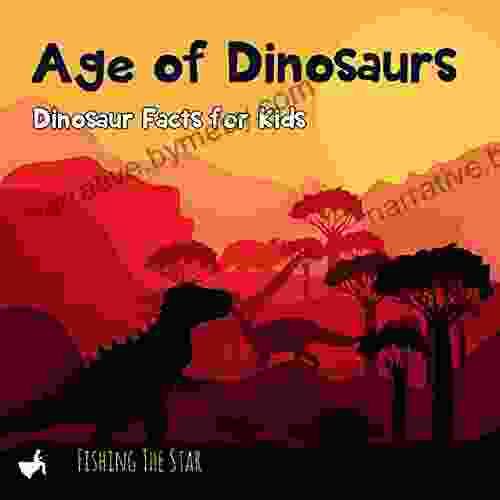
 Henry Wadsworth LongfellowUnveiling the Enchanting World of Dinosaurs: A Journey for Kids
Henry Wadsworth LongfellowUnveiling the Enchanting World of Dinosaurs: A Journey for Kids Roland HayesFollow ·19.7k
Roland HayesFollow ·19.7k Emanuel BellFollow ·11.6k
Emanuel BellFollow ·11.6k Leon FosterFollow ·7k
Leon FosterFollow ·7k Eugene ScottFollow ·7.9k
Eugene ScottFollow ·7.9k Allen GinsbergFollow ·19.2k
Allen GinsbergFollow ·19.2k Maurice ParkerFollow ·16k
Maurice ParkerFollow ·16k Nathaniel PowellFollow ·11.6k
Nathaniel PowellFollow ·11.6k Troy SimmonsFollow ·5.9k
Troy SimmonsFollow ·5.9k

 Ian McEwan
Ian McEwanWhy Didn't Anyone Say Anything? Uncovering the Hidden...
By [Author's...

 William Wordsworth
William WordsworthArthurian Legendarians: Faithless One - Part One – A...
In the realm of legendary tales, the...
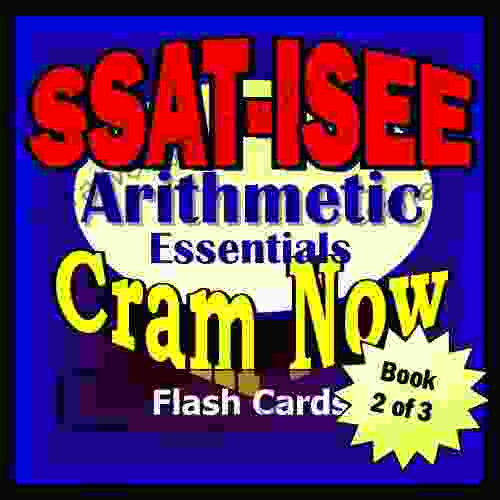
 Corey Hayes
Corey HayesSSAT ISEE Prep Test: Arithmetic Review Flash Cards Cram...
Are you preparing for the SSAT or ISEE exam?...
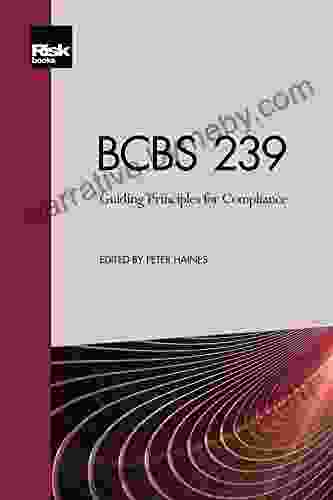
 Robert Louis Stevenson
Robert Louis StevensonUnveiling the Essential Guide to Compliance: BCBS 239...
In the ever-evolving...
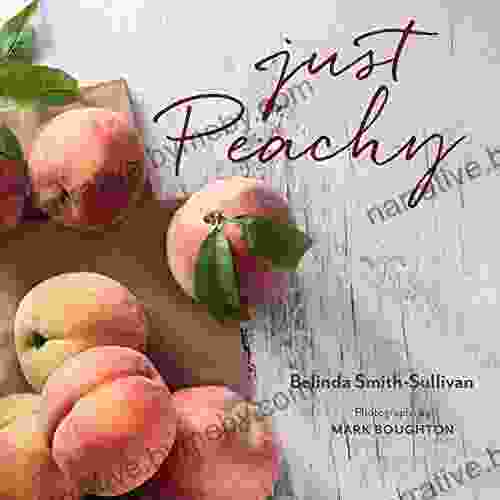
 Javier Bell
Javier BellJust Peachy: A Tale of Sweetness and Sassiness
Immerse yourself in a...

 Brent Foster
Brent FosterStep-by-Step Instruction Manual to Building a Real Estate...
Are you eager to embark on the...
4.6 out of 5
| Language | : | English |
| File size | : | 7704 KB |
| Text-to-Speech | : | Enabled |
| Screen Reader | : | Supported |
| Enhanced typesetting | : | Enabled |
| Print length | : | 274 pages |
| Lending | : | Enabled |


